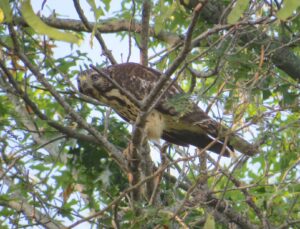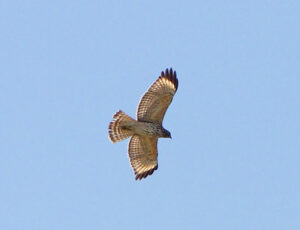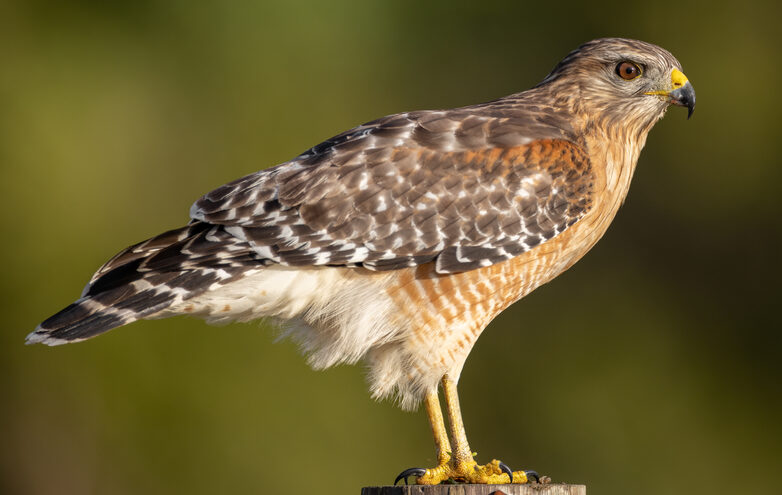Red-shouldered Hawk, Buteo lineatus
Bill Rowe
Back in November, we headlined the Red-tailed Hawk as our most widespread and best-known member of Buteo—the genus of large, wide-winged hawks that divide their time between perching and soaring. Now comes our second, and second-best-known, buteo, the Red-shouldered Hawk. This species used to be predominantly a resident of southern Missouri, mostly limited to mature forests, and often in wet areas. Its broad, long-term decline in much of the eastern U.S. probably reflects a steady loss of this kind of forest cover and wetland. In Missouri, however, the past 20-30 years have seen a resurgence: Red-shoulders have increased their numbers, become more regular in the northern half of the state, and moved into towns and suburbs, where it’s no longer unusual to have a pair nesting somewhere in a well-wooded neighborhood. This should be a welcome development, as the birds are a lively presence with their clear, shrill calls (especially in early spring, when they mate) and colorful adult plumage. Their diet may vary from one part of the country to another depending on what’s most available; in general, they subsist on small mammals, reptiles, and amphibians, less often on birds and insects. The Red-shoulder has a California population, separated from its eastern cousins by over a thousand miles of plains, mountains, and desert—but either way, it is almost entirely a United States bird, reaching across our northern border into Ontario and across our southern border into Baja California.
IDENTIFICATION: Adult Red-shoulders are easy to identify, with their reddish-barred underparts, black-and-white checkered wings, and black tail crossed by narrow white bars. As with other raptors, juvenile Red-shoulders keep their plumage for a whole year or more before molting into adult plumage. They are less obvious, being brown above and streaked below like various other hawks, but (1) Red-tails have a clear breast with streaking only on the belly instead of all the way down; (2) Cooper’s Hawks are accipiters and thus have long tails with wings that reach only a short way down the tail (Red-shoulders’ wings reach over halfway to the tail tip); (3) the smaller Broad-winged Hawk juvenile can be very similar, so check your field guide; it is not here during the colder months. Red-shoulders of all ages can be identified by their loud kee-you, kee-you calls or, when soaring, by the pale translucent crescents near the wingtips.
ST. LOUIS STATUS: An uncommon to fairly common resident of wooded areas, and also a migrant in spring and fall; still present in winter but not as many.
Learn more and listen to the calls of Red-shouldered Hawks here.


Juvenile; notice streaked breast
Photo Credit: Bill Rowe
Juvenile soaring; notice pale wingtip crescents
Photo Credit: Al Smith




